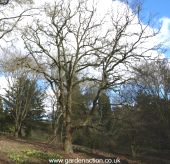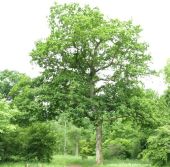Categories
Calendars
Guides
Reviews
Archive
Gallery
Articles
Ask Our Gardening Expert
Pendunculate Oak (quercus robur)
Quercus robur is so well known around the world that it is known
by many common names. Some of these are the Common Oak, German Oak and
the English Oak. Pendunculate Oak (quercus
robur)
The leaves are a dull green on the top,
slightly brighter on the underside. They have four or five
rounded lobes roughly equal on either side.
The bark of the tree is coloured grey with deep grooves in
it. The trunk can grow to a massive size, a girth of 10
metres (33ft) being quite possible in older trees. OAK MYTHOLOGY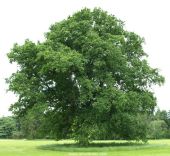
Pendunculate Oak, click to enlarge.
Quercus robur is native to many countries in Europe,
eastern Russia, parts of Asia and north Africa. It grows to a maximum height of over 30m
(100 ft) and some examples are known to be over 800 years old.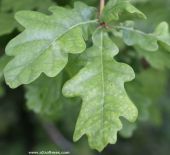
The are 10cm (4in long) when mature. The leaves have almost no
stems (termed sessile) and they gather in clusters along the
branches. They appear in May and are shed in October.
Oak leaves are an important source of food for wild life both on
and off the tree.
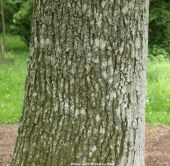
Oak wood is highly valued for making furniture. In past time
the wood was used for building ships and houses.
The bark is high in tannin and was used in the production of
leather. Extracts from the bark was used colouring fabrics
and galls on the barks were used for their dye in the
production of ink.
In ancient times the Druids believed the oak tree was sacred. They
harvested the mistletoe which grew in the higher branches and used
them in their religious ceremonies.
